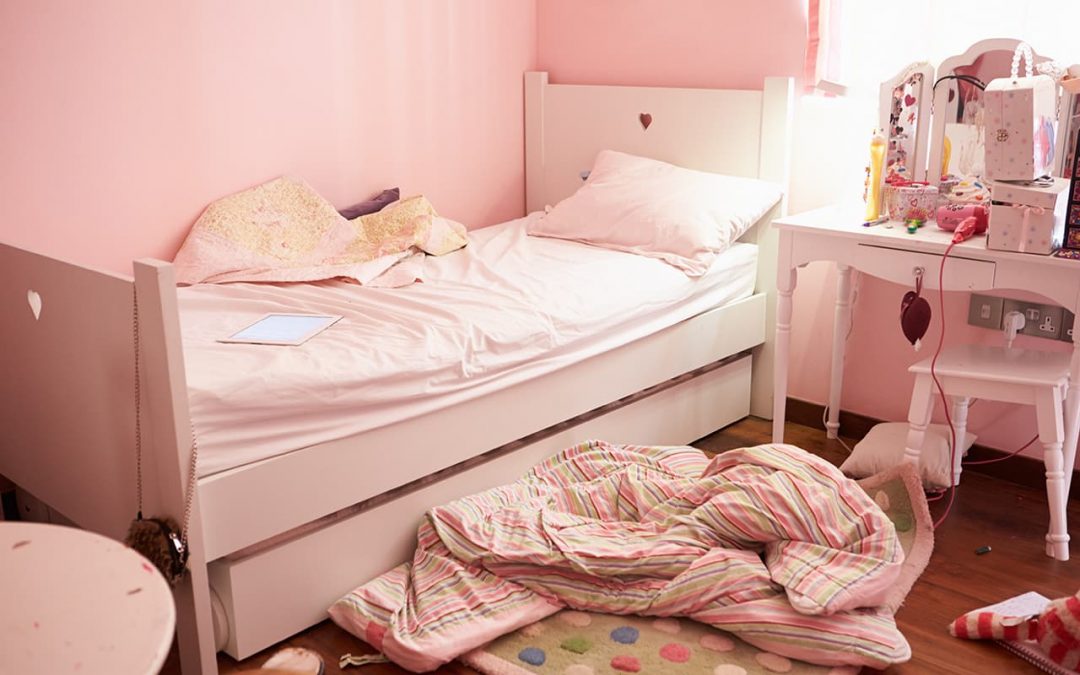In Part 1, we walked through the preparatory steps for decluttering – and they were pretty simple. First, decide you’re going to do it! Then, take your five containers and tackle each room separately.
Bathrooms
Start with these rooms because they’re smaller and you can get some fast wins by designating them as officially decluttered. Medicine cabinets are often full of outdated medications, and unused makeup products. Remove everything, properly discard what’s unusable, and then re-stack the medicine cabinet, placing items you use most often at eye level.
You might be tempted to skip them, but now it’s time to do the same with all drawers and cabinets in the bathroom – especially under the sink. Everything either gets put back or is placed in one of your five containers.
Bedrooms
First, take a look at your bed. Did you make it after you woke up? If not, do that before you start your decluttering. There are plenty of excellent reasons why it’s time to develop the habit of making your bed daily.
With your five containers in place, start with your nightstands. Remember, it goes in one of your containers if it doesn’t belong where you’ve found it. You might be tempted to hang up of fold clothes that aren’t put away in a drawer or in a closet. Instead, put them in Box #1. Do this because it keeps you focused on decluttering.
Experts say it’s easiest to declutter your closets and drawers by clothing type. Pull out your shirts or tops from all closets and chests of drawers so you can see the entire collection at once. Now decide what you’ll keep and what gets donated.
Entryways and Hallways
These need decluttering, too. Desks, consoles and side tables need to be emptied. Put items back where they belong if they really do belong there. The rest goes in one of your five containers.
Kitchen
This is often one of the busiest rooms in the home, so it tends to accumulate a lot of things that really don’t belong there. Start with your pantry. Empty it completely. Then restock it with what you’re keeping. The rest goes in one of your five containers.
Treat your cupboards much the same way you decluttered your clothes in the bedroom. Assemble all your pots and pans so you can see them, and then choose what remains. Then do the same with plates, glasses, utensils, and the rest. You might be tempted to skip it, but make sure to hit under the kitchen sink.
Decluttering experts say a good rule of thumb for the kitchen counter is that it doesn’t belong there unless you use it every day.
Living Room
The thing about living rooms is that they usually don’t offer much in the way of storage, so it’s easy for them to get cluttered. Your choice is to either create some permanent storage areas in this room, or to declutter it and banish what doesn’t belong there either to appropriate places or out of the house completely.
Migration Issues
You’ve got three containers – items that can be put away, items that need attention, and items to be donated – that can be problematic. Don’t procrastinate taking care of things that can be donated. You’ll enjoy the feeling of accomplishment when you drop off these items.
Items that need attention should get it. Moving it from one area to another isn’t decluttering, so be honest and realistic. Commit to repair or cleaning, or let it go.
Finally, there will be items that need a new place to live. You’ve decluttered your house, but often it’s accomplished by moving things you want to keep from one place to another. That’s not really decluttering. Again, be honest with yourself. Keep it because you will use it, not because you might use it.
We can help you with storage solutions.



